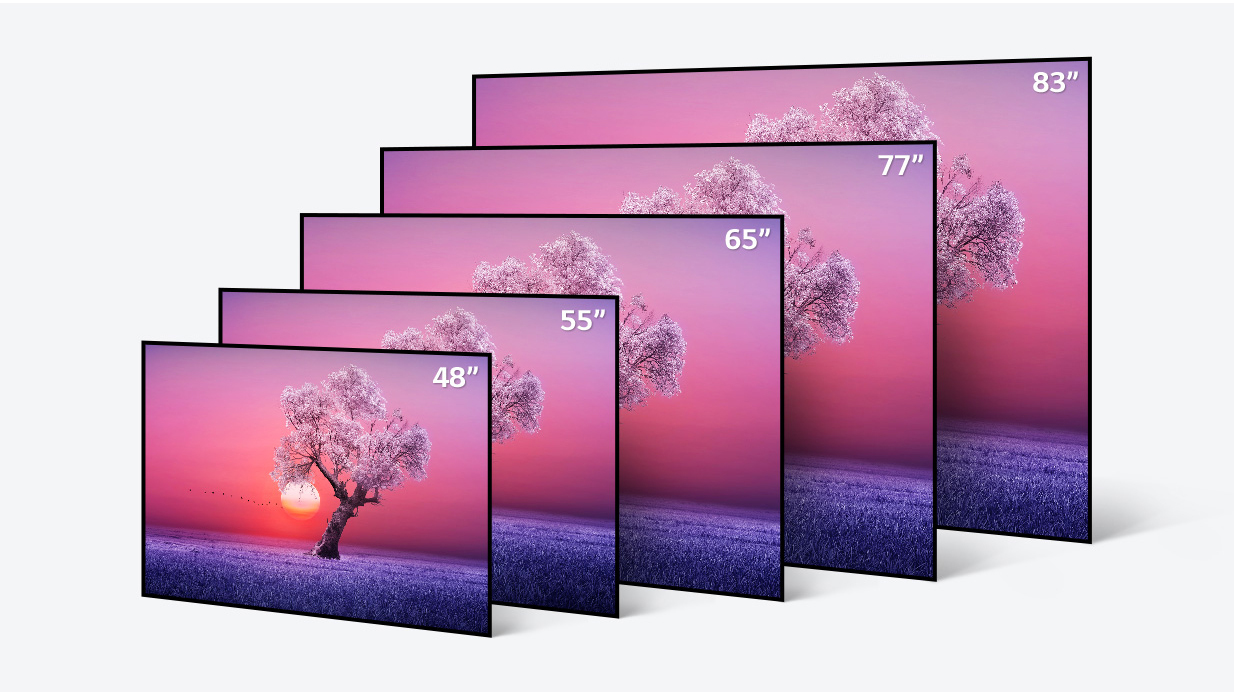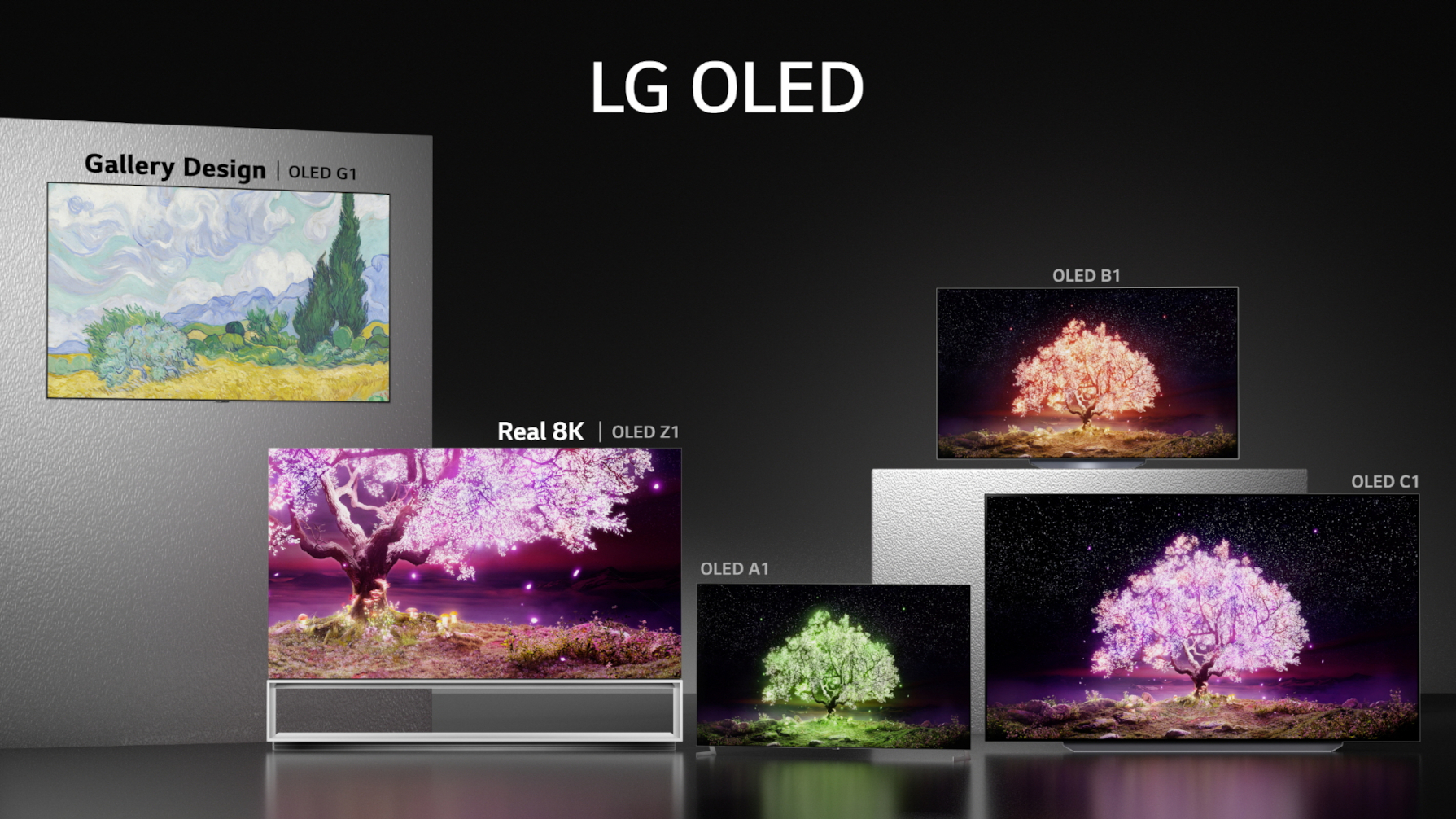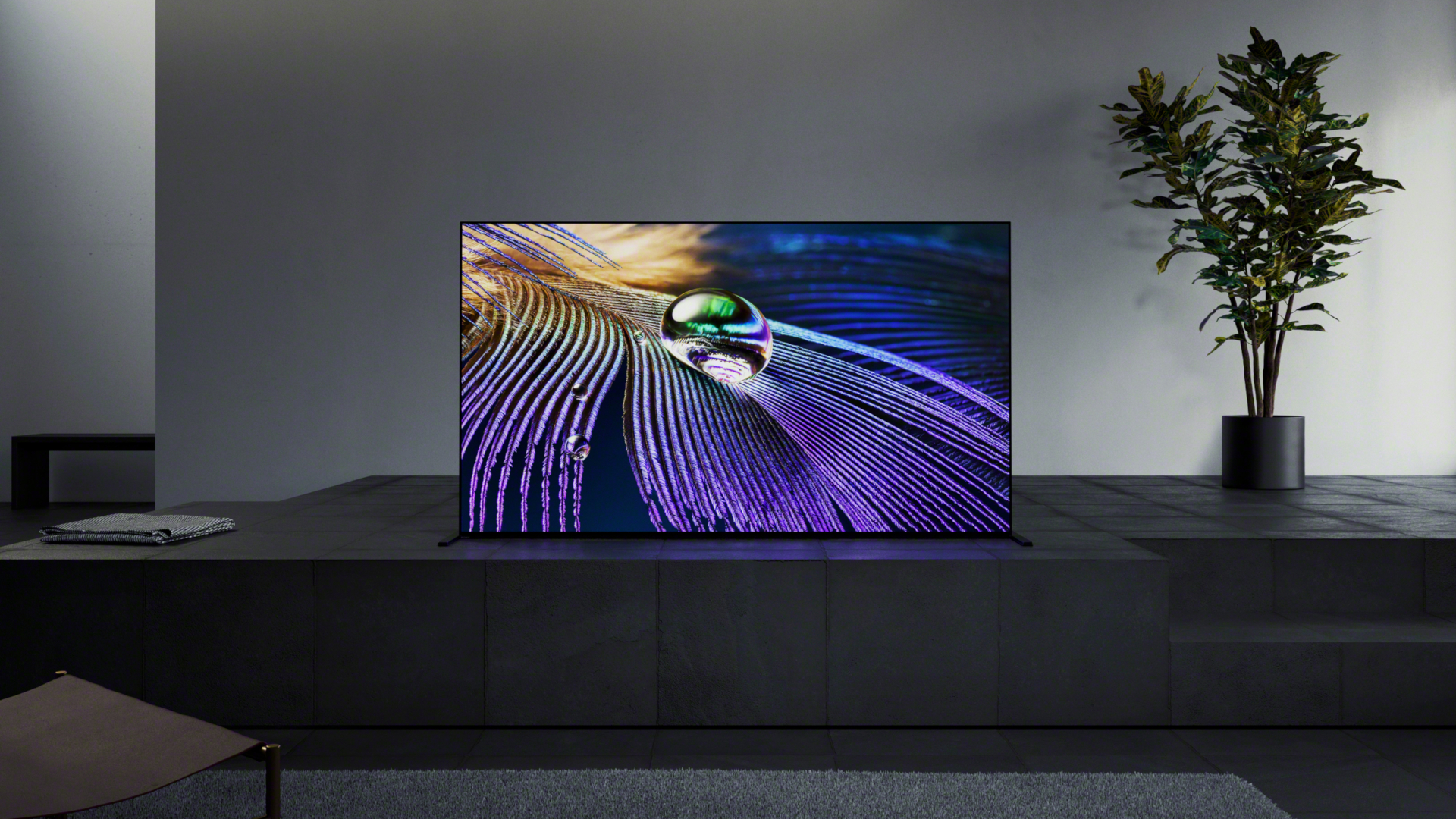Should I buy an 83-inch OLED TV?
A look at the new 83-inch OLED TV size

83-inch OLED TVs have arrived, my friend. The new OLED panel size brings 4K OLED TVs to a new scale, comfortably above the 77-inch models we'd seen before – if a tad below the 88-inch sizes saved for 8K resolution screens.
You'll only find two 83-inch OLED TVs on the market so far: the LG C1 and Sony A90J. Both are high-end 4K TVs from some of the biggest TV brands in the market today, who share an ambition to cater to demand to ever-bigger, ever more impressive OLED screens. And given that sales of 65-inch TVs with OLED recently overtook their 55-inch counterparts, it's no wonder that manufacturers are looking to up their game.
It's an interesting time for OLED TV sizes. Only last year we saw the introduction of 48-inch OLED TVs, a step-down size for more compact homes, while LG Display (the sole supplier of OLED TV panels) has confirmed that 42-inch OLEDs are in the works as well. It's clear that the scale and reach of OLED is expanding, which only means there are more options than ever to help cater to your needs.
But it's the 83-inch OLED TVs that appeal to those with the space, and the budget, to get a truly cinema-sized screen into their home. But should you really buy an 83-inch OLED TV, with the cost that it entails? We'll tell you everything you need to know below.
What 83-inch OLED TVs are there?
Right now there are two OLED televisions that feature 83-inch panel sizes.
There's the LG C1, a 2021 screen that's featured highly in our best TV and best OLED TV guides. LG Electronics (the TV maker) tends to be the first out of the gate with new OLED panel sizes, given it's close relationship with LG Display (the sole supplier of OLED TV panels).
Just as we saw 2020's LG CX herald the arrival of the 48-inch OLED TV before the Sony A9S, Philips OLED+935 and Beovision Contour came onto the scene, so too was LG C1 the first to come in an 83-inch size.
Get daily insight, inspiration and deals in your inbox
Sign up for breaking news, reviews, opinion, top tech deals, and more.
The second 83-inch OLED TV on the market is the Sony A90J OLED – Sony's flagship 4K TV for 2021. You can now find both 83-inch OLED TVs globally too.
We're sure to see more 83-inch OLED TVs, possibly a singular Philips or B&O model in 2021, before a wider expansion in 2022. But 55-inch TVs and 65-inch TVs will likely stay the bestsellers for a while yet.

How much does a 83-inch OLED TV cost?
How much does an 83-inch OLED TV cost? It all depends on which television the size is featured on.
83-inch panel sizes are, so far, limited to flagship or near-flagship models. That means the baseline price is already somewhat inflated.
The 83-inch LG C1 comes with a sizeable $5,999 / £6,999 / AU$12,599 price tag – a big step up from its 77-inch model, which retails for $3,499 / £3,999 / AU$6,995.
The 83-inch Sony A90J, meanwhile, will set you back $7,999 / £6,999 (around $10,500). So LG's model will prove cheaper, though Sony's has a couple of unique perks, like its Acoustic Surface Audio+ sound system (which used the panel as a speaker) or adjustable feet for putting the screen flush on a counter or allowing space for a soundbar underneath. It's worth noting, too, that the A90J is Sony's OLED flagship, whereas LG has two more premium models above the C1 (the LG G1 and LG Z1).
You can, of course, buy quite a few 85-inch TVs with LCD or QLED panel technology, which is some cases are meaningfully cheaper – though you won't get the infinite contrast ratio or per-pixel lighting of an OLED screen.
Would a bigger OLED TV be better?
There's no denying that a larger screen tends to offer a more impactful picture, one where you can see the benefits of modern TV technology more clearly. The advantages of 4K resolution, with all the added detail of those 8 million pixels, will be more apparent on an 83-inch OLED TV than a 40-inch TV (half the size) or even a 65-inch TV (three quarters).
There's something to be said for the sheer sense of scale, too. An 83-inch TV will give a cinema-like experience, especially when paired with a good surround sound system or Dolby Atmos speakers. It'd be far better for group gatherings or family movie nights, with high visibility (as well as OLED's great viewing angles) ensuring you're not competing for a good spot on the sofa.
In the case of both the LG C1 and Sony A90J, the picture isn't quite matched by the audio, though – the former's 40W speakers being a bit distorted on the bass, and the latter's screen-shaking audio being less precise than a good soundbar would be.

What other OLED TV sizes are coming?
83-inch OLED TVs have only just arrived, but it seems pretty certain that OLED TV makers won't stop there.
LG Display has said it's "set to strengthen its lineup by producing 83-inch and 42-inch OLED TV displays starting this year, adding to the existing 88-inch, 77-inch, 65-inch, 55-inch, and 48-inch OLED TV displays."
"This year," as in 2021, makes it seem that 42-inch OLED TVs are on the way before the year is out, though we've had no firm details as of yet. It may be that the 42-inch panels begin to be produced, but aren't utilized in commercial lineups until early-mid 2022.
We don't expect OLED TV sizes to get much larger, to be fair, given that 88-inch 8K OLEDs already exist, and beyond that point you're not really looking at practical sizes for the modern consumer. Additional sizes will likely attempt to target smaller budgets with 42-inch displays, though it's unlikely we'll get 32-inch TVs with OLED screens.
Paul Lee, Head of Global Research at Deloitte, tells us that “Having lots of data on a small screen is hard. Watching a really good movie on a small screen is hard. I would expect television, increasingly, in terms of drama and sports and the like, to be formatted for large screens. So I really can't see OLED TVs becoming a lot smaller.”
- Check out the best 8K TVs
Henry is a freelance technology journalist, and former News & Features Editor for TechRadar, where he specialized in home entertainment gadgets such as TVs, projectors, soundbars, and smart speakers. Other bylines include Edge, T3, iMore, GamesRadar, NBC News, Healthline, and The Times.
